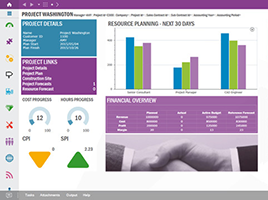Implementing a new ERP system is among one of the most expensive and time consuming tasks a company can take on. To ensure that the value of a new ERP system is achieved, avoid these five common reasons that ERP software implementations fail:
- Lack of planning-unclear vision, goals and approach.
- Lack of resources dedicated to the project (staff time, user involvement, project management).
- Lack of executive support and commitment.
- Fear of change.
- Fear of technology.

Here are some tips on how to overcome these hurdles.
Establish an Effective Implementation Team
A deficit of staff, time, user involvement, project management and IT support makes it hard to ever get an implementation off the ground. While it is understandable that there could be a shortage of knowledgeable resources that can be dedicated to the project, it is crucial to establish an effective implementation team.
The leader of the team should be the project champion – the overall project director who is skilled and knowledgeable, is a respected leader and has a firm belief in the importance of the project. You should also appoint team representatives from each department area. These project co-champions should have a detailed understanding of their department’s day-to-day activities.
An internal technical resource should also be appointed as the hardware and network specialist. In addition, an organization needs an internal trainer. This person must be an effective communicator with good training skills, positive attitude and a lot of patience.
Finalize Project Goals and Priorities
An unclear vision can completely derail an implementation before even beginning.
Set project goals that are specific, measurable, attainable, relevant and time-bound. Determine what is needed to achieve those goals. Goals and priorities will help prevent unknown factors, conflicts and feelings of disillusionment.
Determine a Strategy and Scope
Implementations can either take a phased or full-release approach. If implementing everything at once, an organization should determine if all modules need to be available on the “Go-Live” day, and whether they can handle that level of change and implementation work at once.
When setting an implementation date, avoid holiday and vacation times, consider any other projects being implemented at the same time, and ensure the availability of the team champion and co-champions. External resources may need to be used; the cost of this is likely to be much less than the costs of a business interruption due to a failed system rollout.
Develop a Plan
An implementation plan should have a realistic timeline, including who is responsible for which tasks and the expected timeframe for each. While developing a plan, it is also important to meet with the software vendor project manager and communicate goals, strategies and approaches. All parties should understand the tasks and responsibilities expected of them. Document this plan and track it often.
Ensure Open Communication
Ongoing communication during an implementation project creates a constant mechanism for checking back on the development plan and ensuring everyone involved is staying on target.
Internal weekly meetings among the project champion and co-champions create opportunities for discussing progress of each assigned task and any roadblocks. Plus, this is a good opportunity to make sure management is updated on progress. Meanwhile, open communication should be maintained with the software vendor for continuous feedback.






